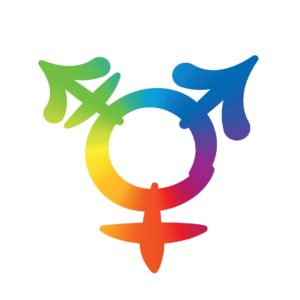Working with Gender Diverse Clients
Working with Gender Diverse Clients: : A Reading and Consultation Group
THIS EVENT IS FULL

This course includes 9 monthly meetings for reading, discussion and consultation. Our emphasis will be on the therapy process, with opportunities to apply our thinking to specific cases. Readings will be chosen from recent psychoanalytic articles and gender-related research, with topics including ASD/GD comorbidity, sexual challenges for gender diverse people, working with internalized shame, early transitions for youth, and sources of support for gender diverse individuals. The course is designed for clinicians who already possess an intermediate to advanced understanding of TGNC issues.
INSTRUCTOR(S): Laura Caghan, PsyD, PsyD
Dr. Laura Caghan looks forward to her 7th year of teaching this course. As both a psychologist (PSY19679) and a psychoanalyst, she’s taught for USC, CSULB, and the Newport Psychoanalytic Institute (NPI). Dr. Caghan has presented at conferences for Gender Spectrum, APA, IARPP, and IAPSP. She also serves as the President of NPI. In addition to gender diversity, her clinical interests include depression, anxiety, early trauma, LGBTQ issues, work and creativity.
CLASS DATE(S) & TIME(S):
9 monthly classes of 90 minutes each, meeting (generally) on first Tuesdays from 10-11:30 am
9/15/20, 10/6/20, 11/3/20, 12/1/20, 1/5/21, 2/2/21, 3/2/21, 4/6/21, 5/4/21
NUMBER OF CEs: 13.5
LOCATION: Zoom
COST: $270
COURSE OBJECTIVES:
- Identify the three main purposes served by support groups for youth who are both neuro-diverse and transgender.
- Name two purposes for support groups serving parents of neuro-diverse, transgender youth.
- List four issues common in transmen who have sex with cis men.
- Compile Swartz’s techniques for resolving relational difficulties caused by shame.
- Identify four common difficulties for people seeking satisfying sex lives after genital surgery.
- Using Heusser’s work on gay men’s internalized homophobia, name three ways that trans people may react to their internalized transphobia.
- List Swartz’s four main points regarding shame and dissociation.
- Describe both the gains and the risks that can happen when therapist and client openly acknowledge their racial differences.
- Compare research findings on family support for trans children versus non-binary children.
- Compare these two views of gender development—that gender evolves throughout life or that gender is a core and stable attribute.
- Apply two paradoxical views of gender—that it’s stable or that it evolves—to the question of social transition for pre-pubescent youth.
- Name three concerns when assessing top surgery for transmasculine youth.
- Name five ways that the internet facilitates healthy development for gender diverse youth.
- Describe three issues important for the therapeutic dyad as therapists work to decolonize their clients’ experiences of otherness. SOLD OUT


